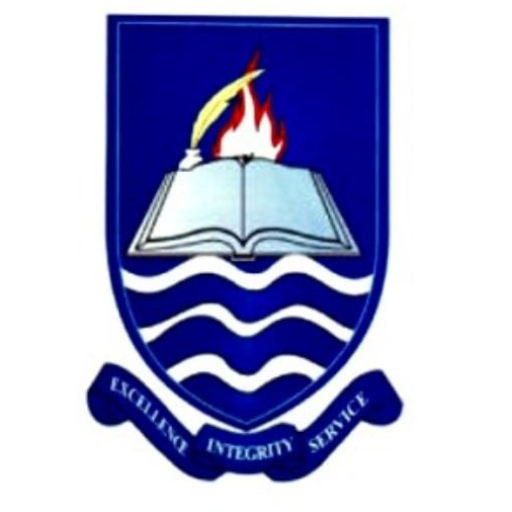Impact of Information and Communication Technology on Physics Education Among Senior Secondary School Students in Ahoada, Nigeria
Keywords:
ICT, Physics Education, Senior Secondary School Students, Ahoada, NigeriaAbstract
This research examined the influence of Information and Communication Technology (ICT) on the teaching and learning of physics among senior secondary school students in Ahoada, Nigeria. The research used a descriptive survey approach. Stratified random sampling and census sampling methods were used to get 200 students and 12 teachers, respectively. The data collection tool for this research was a questionnaire entitled “Impact of Information and Communication Technology (ICT) in the Teaching and Learning of Physics Questionnaire (IICTTLPQ).” A reliability coefficient of 0.80 was established for this study. The acquired data were analysed using mean and standard deviation to address the study questions, while a t-test was used to evaluate the hypotheses at a 0.05 level of significance. The research indicated a substantial disparity between students and teachers on the influence of ICT on teaching and learning. It was determined that there is no major disparity in the challenges encountered by physics teachers and students in utilising ICT for teaching and learning. It was ultimately determined that there was no substantial difference between instructors' and students' attitudes on the use of ICT. The researchers advised, among other recommendations, that secondary school teachers and students should engage in the utilisation of ICT for teaching and learning. Additionally, ICT resources should be insured to facilitate their replacement in the event of vandalism, ensuring continuous availability for classroom instruction. Furthermore, both government and non-governmental organisations should enhance their efforts through funding to provide well-equipped ICT classrooms.
References
Adeyemo, A.S. (2010). The Impact of Information and Communication Technology (ICT) on teaching and learning of physics . IJERT, 1 (2), 48 – 59.
Agyei, D,E., & Agyei, D.D.(2019). Feasibility of ICT use in teaching physics at the senior high schools in Ghana. International Journal of Education, Learning and Development, 7(8), 26-41.
Aina, J. K. (2013). Integrating ICT into physics learning to improve students’ academic achievement: Problems & solutions. Open Journal of Education,1(40), 11 -121.
Akpokiniovo, S. R . (2022). Effects of self-instruction and guided inquiry teaching strategies on secondary school physics students’ achievement. Rivers State University Journal of Education (RSUJOE), 25 (1):156-165.
Alamina, J.I. (2008). Fundamental principles of science teaching and learning. Port Harcourt: Votex publishers.
Amaebite, O.C., & Adiele E.E. (2021). Challenges of online learning in secondary education in Nigeria in the 21st century. Journal of Education & Society, 11(2), 1425 – 1436.
Awuor, F.M., & Okono, E. (2022).ICT integration in learning of physics in secondary schools in Kenya: Systemtic literature review. Open Journal of Social Sciences, 10, 421 – 461. Bao, L., & Koenig, K. (2019). Physics education research for 21st century learning. Disciplinary and Interdisciplinary Science Education Research, 1(2), 1-12. Briones, C. B. (2018). Teachers’ competency on the use of ICT in teaching physics in the junior high school. KnE Social Sciences, 177-204.
Chukwunenye, J.N. (2015). Effects of two modes of computer simulated experiment on senior secondary school students' achievement and interest in practical physics. Unpublished Doctoral Thesis, University of Ibadan, Nigeria.
Dano, U. L., Balogun, A. L., Abubakar, I. R., & Aina, Y. A. (2019). Transformative urban governance: Confronting urbanization challenges with geospatial technologies in Lagos, Nigeria. GeoJournal, 85, 1039-1056. https://doi.org/10.1007/s10708-019-10009-1.
Eddahby, M. Gourja, B., Dezairi, A., Benjouness, B., & Cherouaki, R. (2021). The impact of integrating ICT in teaching and Learning. International Journal of Innovation and Research in Educational Sciences, 8(5), 264-274.
Etukakpan, U.A., Maduka, C.O., & Christopher, A.U. (2021). Virtual classroom and academic performance of ss ii physics students in secondary schools in Abak Local Government Area, Akwa Ibom State. African Journal of Education Archives,7(1), 1-8.
Ezenduka, C.U., & Achufisi, J.N. (2013). Level of secondary school biology teachers’ ICT literacy utilization in Anambra: Implication for MDGs attainment.54th STAN Conference Proceedings, 323-331.
Hussaini, R. A., Ibrahim, S., Ukhurebor,E.K., Jokthan,G., Ndunagu,N.J., Abiodun,O.A., Leonard,E.F., Eneche,M.B.,& Nalwadda. D. (2023). The influence of Information and Communication Technology in the teaching and learning of Physics. International Journal of Learning, Teaching and Educational Research, 22(6), 98-120.
Isa, S.G., Mammam, M.A., Badar, Y., & Bala, T. (2020). “The impact of teaching methods on academic performance of secondary school students in Nigeria”. International Journal of Development Research, 10 (6), 37382-37385.
Josiah, M. M., Muhammad, H. S., Ibukun, D. Badewa, D.I., & Zingdul, P.V. (2022).Influence of outdoor laboratory instruction on secondary school students' interest and achievement in reflection and refraction concepts in Jos North, Nigeria. Education & Science Journal of Policy Review and Curriculum Development ESJPRCD, 11(1), 104 – 118.
Kamaludeen, S., Sufiyanu, D.,Murjanatu, A.,& Abubakar, A.A.(2021).Application of ICTs and educational software in teaching physics: Advantages, challenges and proposed solutions. International Journal of Research and Review, 8(1), 293- 304.
Kamar, M.Y., Kubo, B.G., & Ibrahim, R. (2016). Emergency communication technologies in science education and issues of e - compliance among science teachers in Nigeria. 57th STAN Proceedings, pp 3-9.
Khalid, K., Ahmad, F. S., & Norman, R.(2016). Information and communication technology in learning physics at secondary school level in Pakistan. Bulletin of Education and Research, 38 (2), 135-151.
Madubuchi, C.N. (2021). Challenges in the teaching and learning of science education in the 21st century in Nigeria. Journal of Education & Society, 11(2),1416 – 1424. Makanda, J. L. (2015). Use of ICT in teaching physics: A case of secondary schools in Kimilili district, Bungoma County, Kenya. A published masters work.
Merja, M., & Maarika, P. (2018). Ubiquitous learning in appropriate learning environments. International Journal of Technology and Inclusive Education (IJTIE), 7(1). Mwambela, C., Mondoh, H., & Thoruwa, T. (2020). ICT use and its challenges in teaching secondary school physics in Mombasa County, Kenya. The International Journal of Humanities & Social Studies, 8(3). https://doi.org/10.24940/theijhss/2020/v8/i3/HS2003-068
Mwanaszumbah, A.R. & Magoma, C.M. (2016). Does the integration of ICT in physics instruction in secondary schools play the magic card? European Journal of Education Studies, 2(3), 120 – 135.
Shedrack, T. (2022). Availability and use of ICT materials in teaching and learning of physics among senior secondary students in Obio-Akpor Local Government Area of Rivers State, Nigeria. Scholarly Journal of Education, 9(1), 6 – 13.
Shehu, A. J., Muhammad, I., Isah, Y., & Bashar, I. (2021). Utilizations’ of ICT resources among tertiary institutions in Sokoto State, Nigeria. International Journal of Research and Innovation in Social Science (IJRISS), 5(2), 408 -410.
Simin, G., Thanusha, K., Logeswary, R., & Annreetha, A. (2015).Teaching and learning with ICT tools:Issues and challenges from teachers’ perception. Malaysian Online Journal of Educational Technology,4 (2), 38 -57.
Simin, G., Wan, A., & Wan, R. (2015). Teaching and learning with technology: Effectiveness of ICT integration in schools. International Journal of Research in Education and Science (IJRES), 1(2), 175 -191.
Sukarmin, M., Suparmi, M., & Ratnasari, D. (2017). The implementation of two-tier multiple choice (TTMC) to analyse students’ conceptual understanding profile on heat and temperature. In International Conference on Teacher Training and Education 2017 (ICTTE 2017). Atlantis Press. https://doi.org/10.2991/ictte-17.2017.41
Suleiman, A. (2018). Roles of ICT in Teaching and Learning of Physics: Focus on Senior Secondary Schools in Azare. Fundma Journal of Educational Foundations (FUJEF), 1(1), 70-78.
Suleiman, S.M., & Yahya, M.K. (2016). Science, Technology, Engineering and Mathematics (STEM): The need for teacher training in Information, Communication and Technology(ICT) for effective classroom delivery. STAN Proceedings, 59 – 62.
Uwizeyimana, D., Yadav, L., Musengimana, T., & Uwamahoro, J. (2018). The impact of teaching approaches on effective physics learning: An investigation conducted in five secondary schools in Rusizi district, Rwanda. Rwandan Journal of Education, 4, 4-14.
Yadev, R. (2015). Attitude of secondary school teachers towards the use of Information Communication Technology in Education. International Journal of Education and Information Studies, 5(1), 31-33.
Yunusa, A.Y., Lambisa, Y. Z., & Yarima, U. F. (2019).ICT in teaching and learning physics: Prospects and challenges in Nigerian educational Sector. World Academics Journal Management, 7 (1), 9-11.








